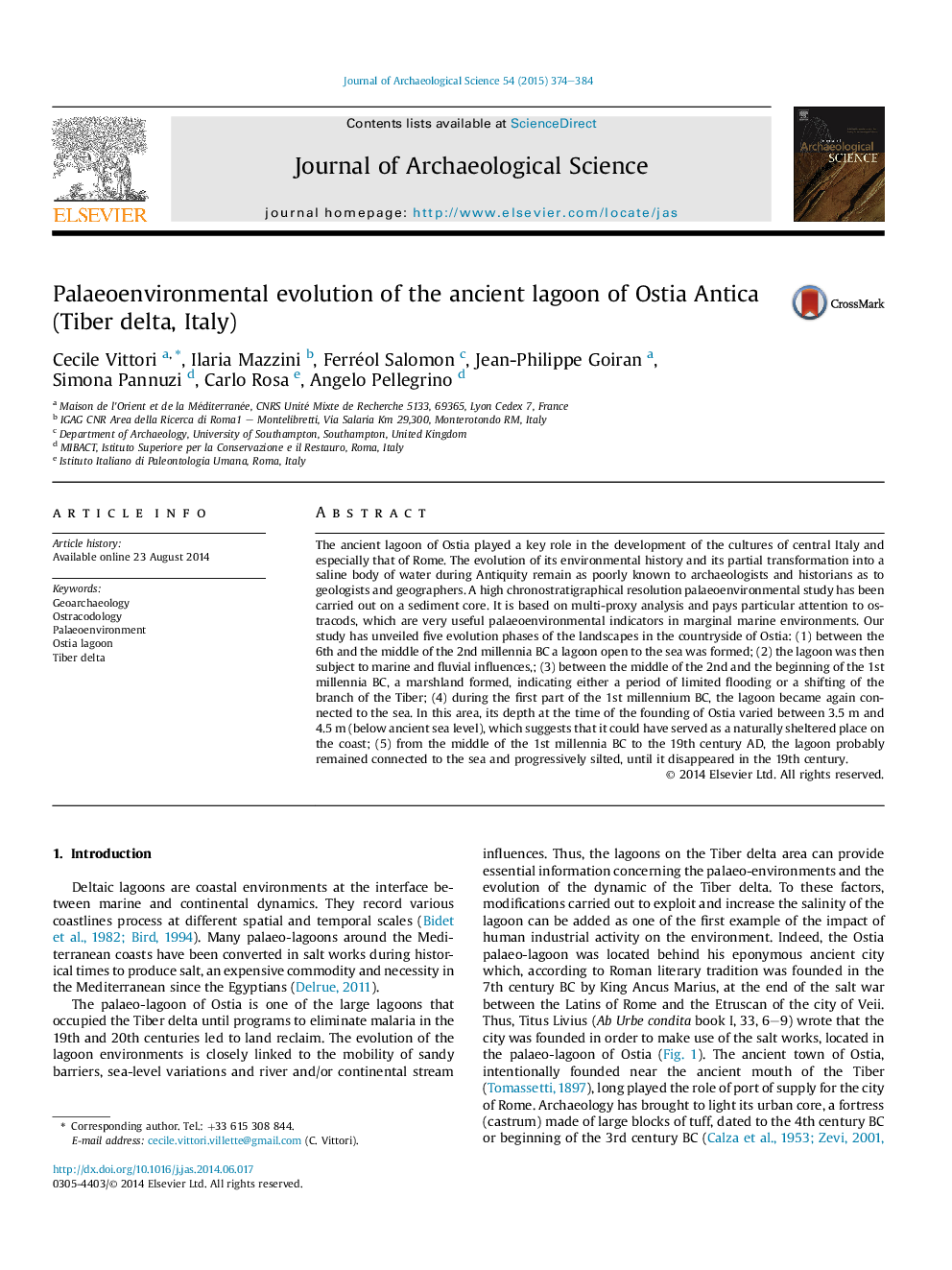| Article ID | Journal | Published Year | Pages | File Type |
|---|---|---|---|---|
| 7442467 | Journal of Archaeological Science | 2015 | 11 Pages |
Abstract
The ancient lagoon of Ostia played a key role in the development of the cultures of central Italy and especially that of Rome. The evolution of its environmental history and its partial transformation into a saline body of water during Antiquity remain as poorly known to archaeologists and historians as to geologists and geographers. A high chronostratigraphical resolution palaeoenvironmental study has been carried out on a sediment core. It is based on multi-proxy analysis and pays particular attention to ostracods, which are very useful palaeoenvironmental indicators in marginal marine environments. Our study has unveiled five evolution phases of the landscapes in the countryside of Ostia: (1) between the 6th and the middle of the 2nd millennia BC a lagoon open to the sea was formed; (2) the lagoon was then subject to marine and fluvial influences,; (3) between the middle of the 2nd and the beginning of the 1st millennia BC, a marshland formed, indicating either a period of limited flooding or a shifting of the branch of the Tiber; (4) during the first part of the 1st millennium BC, the lagoon became again connected to the sea. In this area, its depth at the time of the founding of Ostia varied between 3.5Â m and 4.5Â m (below ancient sea level), which suggests that it could have served as a naturally sheltered place on the coast; (5) from the middle of the 1st millennia BC to the 19th century AD, the lagoon probably remained connected to the sea and progressively silted, until it disappeared in the 19th century.
Related Topics
Physical Sciences and Engineering
Materials Science
Materials Science (General)
Authors
Cecile Vittori, Ilaria Mazzini, Ferréol Salomon, Jean-Philippe Goiran, Simona Pannuzi, Carlo Rosa, Angelo Pellegrino,
